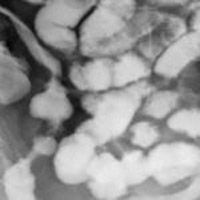Article
Artificial Gut May Be on the Horizon
Author(s):
Cultures grown outside the body can promote and restore gut feelings, according to research published in the Journal of Tissue Engineering and Regenerative Medicine.

Cultures grown outside the body can promote and restore gut feelings, according to research published in the Journal of Tissue Engineering and Regenerative Medicine.
Researchers from the University of Manchester used novel techniques to create an organ culture model that was able to test physical manipulations to enhance the healing of gut segments. The idea was that the gut segments would be able to create a single functional organ. The researchers observed the actions of mice intestine models linked with a thread.
One of the reasons the innovation is important, the researchers explained, is that intestine embryos are unable to be studied inside the body. This prohibits development of treatment for conditions that cause damage in infants.
“The ability to study organs outside of the body is delivering new insights into how they work,” study leader Adrian Woolf explained. “In this case we’ve been able to study damaged intestines and instigate repairs which could lead to treatment in a number of conditions.”
In approximately 75% of the 36 tests conducted, nerve cells were passed between the models, which created a joined, single gut. A video also demonstrates the authors’ findings.
The authors believe their findings could primarily assist in short bowel syndrome (SBS), which is caused by the dysfunction of sections of the bowel in premature babies. It can also occur adults with Crohn’s disease (CD) or those who have had recent surgeries. The damaging effects of SBS include not being able to absorb vitamins and nutrients and weight loss that is fatal in some cases.
In the near future, the researchers plan to test the method ex vivo and perfect it before moving on to testing the method in human.
Another finding of the study was the evaluation of the growth factor R spondin 1. The researchers wanted to stimulate the factor to grow more rapidly and, in addition, make it more successful. The investigators were able to enhance faster growth in the factor, but were unable to establish the connection in a uniform way and the fusion methods were not as successful.
“In this study we managed to bridge a gap of less than 1 mm, but for this to be useful in conditions like SBS we’ll need to promote growth across much larger distances,” Woolf concluded. “Having the ability to test different vitamins and hormones which promote growth opens up many new possibilities for future treatments.”
In related news, earlier this year scientists working with gut stem cells from humans and mice reported they had “successfully grown healthy intestine atop a 3-D scaffold made of a substance used in surgical sutures.” They also reported their laboratory-created intestine “successfully regenerated gut tissue in the colons of dogs with missing gut lining.”
"Our experiments show that the architecture and function of our lab-made intestine strikingly resemble those of the healthy human gut, giving us real hope that our model could be used as the backbone for replacement intestine," said principal investigator David Hackam, MD, PhD, the Johns Hopkins Children's Center’s surgeon-in-chief, who initiated and conducted most of the work at the University of Pittsburgh.




